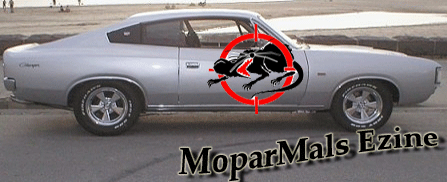Machinists – My view is ALWAYS check a machinists work..never
assume its right. The quality of machining work from the three contracted machinists
I used was BELOW standard.
-
The crank went
back twice, due to taper in the journals
-
The block was
not decked accurately,
-
Valve seats were
cut sloppily effecting installed heights on the heads.
-
The anti leak
groove on the tail piece of the crank was linished off but some GM idiot who didn’t know what he was doing, causing
a rear main seal leak (Check anti-leak bearing under parts)
Parts –
Never assume they are correct!
-
James found the wrong rings in two different packets sold
to him by a local machine shop.
-
I
got sold a MP “HV” fuel pump that turned out to be std pump with the wrong p/no.
-
Then,
the replacement HV Holley pump had a defective check needle that caused chronic “loading up” of fuel and caused
the bores to score slightly.
-
ALWAYS
check your lifters!! – Check the crown on the lifter face and that they rotate in the bore! – James had to blue
print my lifter bores as some were patently too tight.
-
Do
not use the Mellings oil pump drive gear…it has a weakness at the base of the shaft…….use the Mopar Performance
one if you need a HD item.
-
Always
check your re-manufactured carb. After fixing the fuel pump problem, I still couldn’t work out why the carb was flooding
at 7 psi – Reason? – A needle was in the wrong way in the needle and seat..!
-
Intake
– Never assume a used intake will seal correctly. Get it faced to the correct angle. Its not just about bolt holes lining
up, its about a full face seal as well.
-
B&M
flex plates do NOT use the std Factory converter bolts, they are one size too small….use either BW35 or HD ½”
converter bolts, and of course if your converter is factory, you will have to tap the converter lugs to the correct thread.
-
The
MP windage tray is a lousy fit…be prepared to do some minor panel work.
-
The MP anti leak bearing is a beauty!! It saved me when we discovered the damage dione to the crank by
the machinist...so far not a drop of oil on the tarmac!
Assembly / start up tips
Use someone
who knows how to blueprint! - It’s amazing how many little tricks there
are which even the best books don’t talk about….
Rotating assembly – Don’t
assume your bearing clearances are right, check them with plastigauge. James found one bearing shell that was one thou
below spec.
Cam break in - Main tip
here is DON’T use cam lube on the lifter bores…its too sticky. Use
running in oil to lube the lifter sides, and cam lube for the faces and cam lobes.
Electrical
To avoid a potential
“false start”, make sure the ignition system is reliable and the ECU is earthed well…..the vibration from
a 2500 rpm break in can shake the ECU loose, and the engine will stop – not a
happy scenario.
When you've dropped the dissy in, check to make sure youve got spark at No 1 and not
No 6, just turn the ig. on and rotate the dissy by hand back and forth past the trigger point on the reluctor, with no 1 lead
disconnected but placed next to an earth...you shoud see it spark if its firing to the right lead. 
Timing – The factory dissy
holds WAY too much timing in the mechanical advance for a HiComp motor. Reducing the advance in a dissy is NOT a complicated
process…so don’t pay through the nose for it. 10 mins with a Mig and a file, welding up the slots in the dissy
weights, and a degree wheel is all that’s required. You local Val repairer should be able to do the job for under $100….and
it’s some of the best insurance you can have against a blown engine.
Cooling system
Water leaks –
Yeah I know...pretty obvious, but when filling the engine, try to avoid splashing water everywhere….it makes water leaks
much easier to pick up BEFORE start up
Some timing cover
and intake bolts go to the water jacket…so make sure you use Ultra Copper to seal those bolts.
Oiling system.
Oil pump - The early Mellings HV pump used counter sunk faceplate bolts. Latest production runs use bolts that sit proud of the 0il pump body – The result,
the bolt head nearest the corner of the oil pan actually rubs on the inside corner of the pan, and it will split
the pan eventually if left unattended.
The fix?
– Peen out the corner of the sump to provide the bolthead with some clearance.
Change –
Dump your break in oil when it’s HOT!…that
way the residual cam lube etc drains far more easily.
Fittings –
If you are running a remote system, fit your block fittings and
hoses B4 you drop the engine in….it makes life a lot easier and its one less thing to have to wrench on under the car.
Lines –
UNDER NO CIRCUMSTANCES let your oil lines come into contact with any sharp edges or moving parts (steering column, drag link etc). The hot rubber lines wear quickly and then Kaboom!!
Fuel
-
Don’t
expect a std fuel pump to feed 400 HP under load, take it from me, it doesn’t!
-
DEFINITELY
fit a fuel pressure gauge…having one on my engine would have saved me 5 weeks of heartache.
-
DON’T
use old fuel for start up….it increases the risk of detonation if you get your timing squirrelly.
-
Buy
yourself a couple of cheap plastic filters….if your car has been sitting, you don’t want to waste good filters
on the initial start up “flush”.
-
Dual pumps? - It used to be necessary because old electric pumps lasted about 15 hours!!,,,but
its not recommended to run an electrical through a mechanical pump these days….it can cause the mechanical to cavitate.
If running an electrical pump, you can leave the mechanical fitted as “insurance”…just route a small length
of hose from the inlet to the outlet and leave a small amount of fuel in the pump. That way it’s there if the electrical
dies on you….
Exhaust
Std exhaust manifolds
(360 or 318) will not work effectively on a warm SB.
Factory 360 mans.
KILLED the HP output of my engine…..so include the price of some headers in your build costs.
Also, not a good
idea to use 360 headers on a 318…the port face area is not large enough to support a decent seal around the Siamese
ports ….a sure-fire place for a leak.
[Ed note: -
I’m going to keep adding to this list as I come across things…I know that most of this stuff I wouldn’t
have know except for the knowledge and expertise of the guys who helped me….so I hope this helps in turn.]
Mopar Mal

